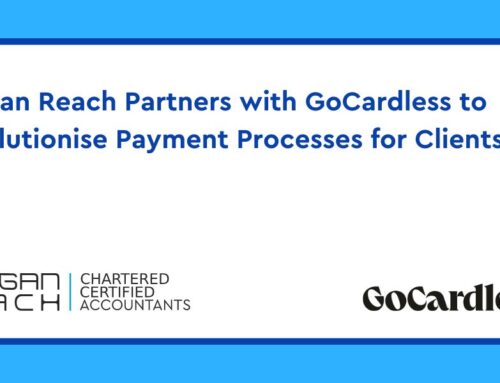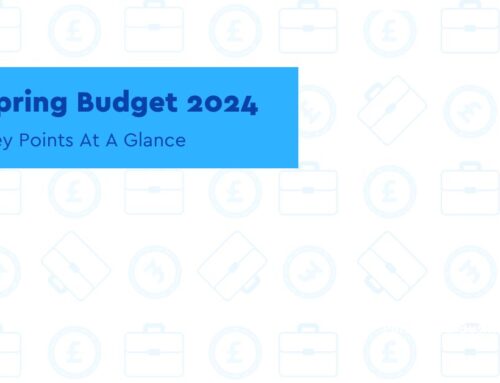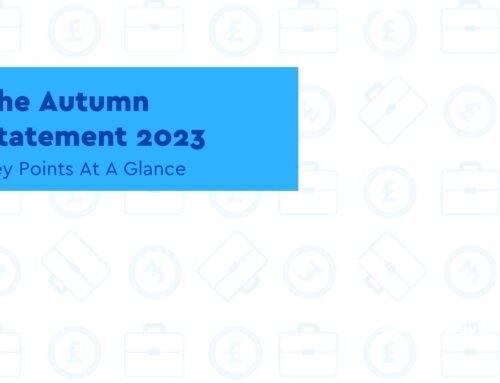Self Employment Income Support Scheme: Fifth grant turnover test
Key Points
- To make your claim, you’ll need to have 2 different turnover figures
- The grant is subject to Income Tax and self-employed National Insurance Contributions.
Unlike the previous four grants, the fifth grant will be worth different percentages of average trading profits depending on the claimant’s circumstances.
The grant will be worth 80 percent of three months’ average trading profits, capped at £7,500, if the claimant has seen a reduction in turnover of 30 percent or above.
Someone who has seen a reduction in turnover of less than 30 percent could get a grant worth 30 percent of three months’ average trading profits, capped at £2,850 in total.
To make your claim, you’ll need to have 2 different turnover figures. You’ll need to work out your turnover for:
- A 12-month period starting between April 1, 2020 and April 6, 2020. The turnover figure should be for all of the taxpayer’s businesses, but exclude Covid-19 support payments (such as: SEISS grants, eat out to help out payments and local authority/devolved administration grants)
- Either 2019 to 2020 or 2018 to 2019. Partners will need to provide turnover figures for the partnership as a whole unless they also have other trades, in which case they can use their share of the partnership turnover.
HMRC will compare these figures to work out how much you’ll get.
Those who started trading in 2019/20 and did not trade in any of the tax years 2016/17, 2107/18 or 2018/19 will not be required to provide turnover figures and will receive a grant based on 80% of trading profits. The maximum grant amount is £7,500.
The grant is subject to Income Tax and self-employed National Insurance Contributions. The grant also counts towards your annual allowance for pension contributions.
The online service for the fifth grant will be available from late July 2021.
Connected companies and Employment Allowance: Latest guidance
Key Points
- You can only claim the Employment Allowance against one PAYE scheme you are responsible for.
Employment Allowance allows eligible employers to reduce their annual National Insurance liability by up to £4,000.
You’ll pay less employers’ Class 1 National Insurance each time you run your payroll until the £4,000 has gone or the tax year ends (whichever is sooner).
You can only claim against your employers’ Class 1 National Insurance liability up to a maximum of £4,000 each tax year. You can still claim the allowance if your liability was less than £4,000 a year.
To claim the Employment Allowance, you will need to know whether you, as an employer, are or were a connected company at the start of that tax year.
If at the start of the tax year, 2 or more companies are connected, the companies will be treated as being connected for Employment Allowance purposes for the remainder of the tax year regardless of any later change of circumstance in that year.
HMRC’s latest guidance states that the rules relating to connected companies do not apply to sole traders, partnerships or single companies.
If your company has control of, or is under the control of, another company, or both companies are under the control of the same person or persons, for example, companies linked in a group – these companies are connected.
The basic rule for deciding if 2 companies are ‘connected’ with each other is that either:
- One of them has control of the other
- Both are under the control of the same person or persons
You can only claim the Employment Allowance against one PAYE scheme you are responsible for. If you are responsible for more than one scheme, you must decide which scheme to set your Employment Allowance claim against.
Whether you can claim any unused allowance against another PAYE scheme you are responsible for depends on whether the separate businesses are incorporated (limited companies) or unincorporated (sole trader) businesses.
This guidance will help you decide which company is eligible to claim Employment Allowance.
Extended time limit for notifying an option to tax
Key Points
- You do not need to own the land in order to opt to tax
- You may opt to tax in order to improve VAT recovery on capital expenditure relating to the property
As a result of social distancing measures following Covid-19, HMRC has announced some changes to the option to tax time limits and rules.
During the pandemic, the time limit for notifying HMRC about a decision to opt to tax land and buildings was extended from 30 days to 90 days where the decision to opt was made on or after February 15, 2020. This extended time limit was due to come to an end for decisions made on or after July 1, 2021. However, it will now apply for decisions made up to and including July 31, 2021.
Supplies of land and buildings, such as freehold sales, leasing or renting, are normally exempt from VAT. This means that no VAT is payable, but the person making the supply cannot normally recover any of the VAT incurred on their own expenses.
You can, however, opt to tax land. For the purposes of VAT, the term ‘land’ includes any buildings or structures permanently affixed to it. You do not need to own the land in order to opt to tax.
You may opt to tax in order to improve VAT recovery on capital expenditure relating to the property – this includes the VAT incurred when acquiring the property and capital expenditure on improving or refurbishing the property.
If you are notifying an option as a business
You can form VAT1614A with an electronic signature but HMRC also requires evidence that the signature is from a person authorised to make the option on behalf of the business.
Examples of supplementary evidence include emailing the form:
- With an email from the authorised signatory to the sender within the business, giving authority to use the electronic signature
- From the authorised signatory with their sign off in the email and the form
- With an email chain or a scan of correspondence showing the authority given by an authorised signatory
UK economy continues slow recovery
Key Points
- Consumer and business confidence continues to recover and the labour market is buoyant
- Growth remains well below the pre-Covid pandemic level of 3.1% recorded in February 2020
The UK’s gross domestic product (GDP) crept up for the fourth consecutive month in May, with an estimated rise of 0.8%, prompting a mixed reaction from economists.
GDP measures the value of goods and services produced in the UK and estimates the size of and growth in the economy. The fact that GDP is rising is a positive indicator for the economy, but growth remains well below the pre-coronavirus (COVID-19) pandemic level of 3.1% recorded in February 2020.
The figures indicate a mixed picture in different market sectors. Activity in the accommodation and food service markets increased strongly by 37.1% in May as Covid restrictions eased, feeding through to overall growth in the sector of 0.9%, and the production sector returned to growth of 0.8% thanks to the inclement weather pushing up our use of electricity and gas.
But output in the manufacture of transport equipment fell by 16.5%, its largest fall since April 2020, as microchip shortages disrupted car production. The construction sector also shrank for a second consecutive month in May 2021, by 0.8%, due to the wet weather and material shortages, but remains 0.3% above its pre-pandemic level in February 2020.
Reasons to be cheerful
Some economists greeted the figures with cautious optimism. Julian Jessop, economics fellow at free market think tank the Institute of Economic Affairs, said:
“The 0.8 per cent increase in GDP in May was slightly disappointing and means that the UK economy was still 3.1 per cent smaller than the pre-Covid level seen in February 2020, despite a bounce in the hospitality and leisure sectors as more restrictions were eased.
“However, one month’s data is not enough to change the big picture. Activity is still likely to recover to pre-Covid levels in the third quarter of the year.
“The main misses in May were in construction and retail, both of which will have suffered from the wet weather. The more timely June surveys for both sectors are reassuring, with the construction PMI and the CBI Distributive Trades surveys each hitting new highs.
“In the meantime, consumer and business confidence have continued to recover, the labour market is buoyant, and pipeline inflation pressures are still rising. Policy-makers should therefore still scale back support that now risks doing more harm than good, including the Treasury’s furlough scheme and the Bank of England’s money printing.”
Gloom in the boom
Paul Craig, Portfolio Manager at Quilter Investors, warned that there is still some gloom in the boom:.
“There’s a danger that the ‘booming’ consumer-facing services sector masks trouble elsewhere. Manufacturing output is flatlining after two consecutive months of modest contractions. Transport equipment fell 16.5% as a result of semi-conductor shortages holding back car production. Construction output is down for another month, no doubt hampered by cement and aggregate shortages, although output has recovered above pre-pandemic levels.
“And then there’s the risk of variants. Things still could turn on a sixpence and all we hear about in the press is the rising case numbers and how things will play out once ‘freedom day’ is upon us. We are throwing caution to the wind and nobody knows how consumers will react. The surging case numbers and lack of mask wearing may well just encourage them to stay at home, out of choice this time around. Only time will tell.”
Weekly HMRC, Gov’t and tax updates
Construction Industry Scheme (CIS) – useful verification information for contractors and subcontractors
Following changes to the construction industry scheme (CIS), subcontractors must provide to contractors exactly the same legal business name, or trading name, that they used when registering with HMRC for CIS, along with their unique taxpayer reference.
The contractor needs this information to verify you and pay you correctly.
Contractors then need to use those exact details when undertaking a verification request otherwise it may give an ‘unknown’ or ‘unmatched’ result. HMRC will be updating online verification guidance for contractors and subcontractors to reflect this.
Do not forget If you are a contractor you can sign up for email alerts to receive GNS messages which can be done within your online account. These GNS messages provide useful reminders for contractors for example when you have not filed your monthly return with the deadline approaching, confirmation of inactivity periods, and other messages.
Business tax account – Help and support
Individuals, sole traders, partnerships and limited companies can use HMRC’s business tax account to get a snapshot of their tax position for over 40 taxes including Self Assessment, VAT, PAYE and Corporation Tax.
HMRC has now updated their online resources including a video on how to add the above services to your account. It includes a step-by-step guide on signing in to the Government Gateway, adding your corporation tax UTR, company registration number and national insurance number.
14.5 million jobs supported since pandemic onset
Statistics reveal that 14.5 million jobs and individuals have been supported by the Government since the COVID-19 pandemic and one year on from the introduction of its ‘plan for jobs’.
Announced on 8 July 2020, the blueprint was originally costed at around £30 billion, being made up of initiatives like the kickstart scheme, job retention bonus and eat out to help out scheme.
Since then, the furlough scheme and self-employed income support scheme (SEISS) effectively became part of the plan for jobs, supporting 11.6 million and 2.8m jobs respectively, according to Government statistics.
Get In Touch
At Morgan Reach, we understand every business needs a little help now and again-especially when it comes to the financial side of things. Therefore, to help our clients and visitors we endeavour to cover as much of the business news as possible. If you are self-employed or run a business and need assistance and advice on how these news could make a difference to you or your business, feel free to get in touch with the experts at Morgan Reach. Our business growth experts at Morgan Reach will guide you through what support is available for you or your business as well as the latest news that may affect you.







